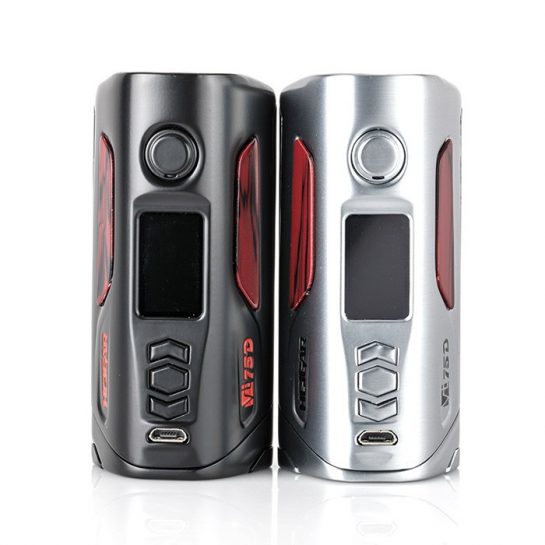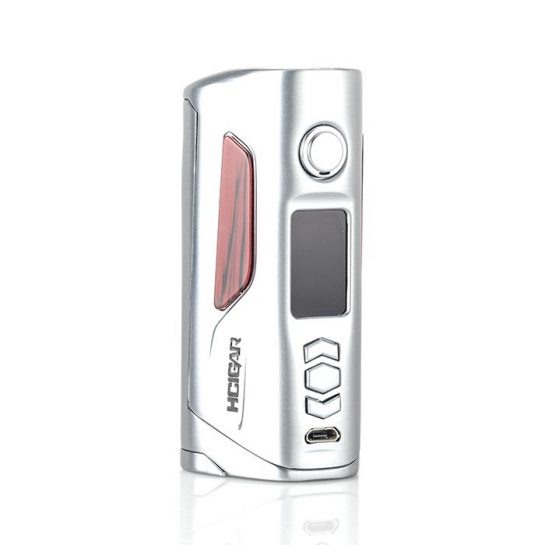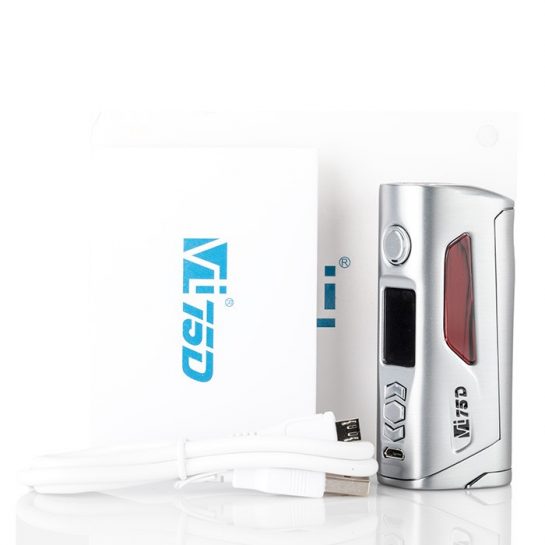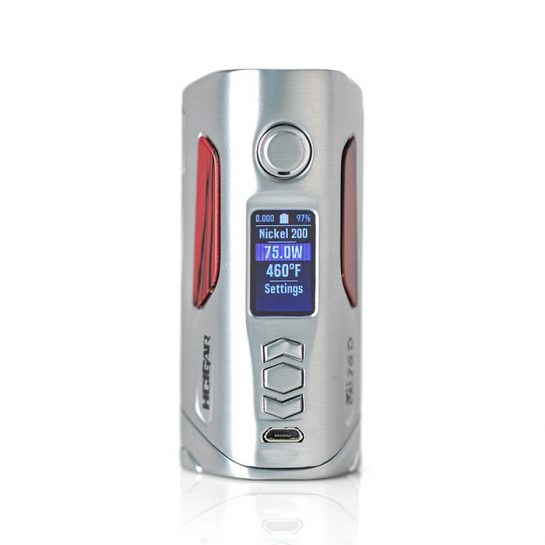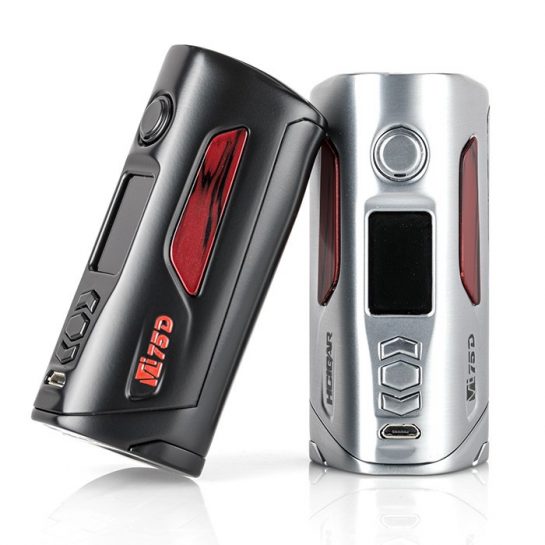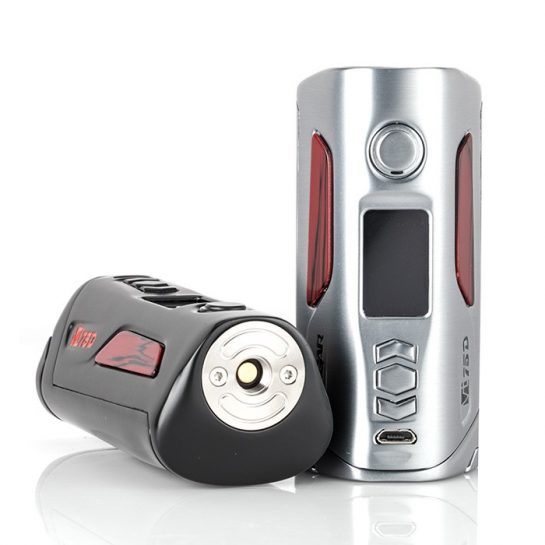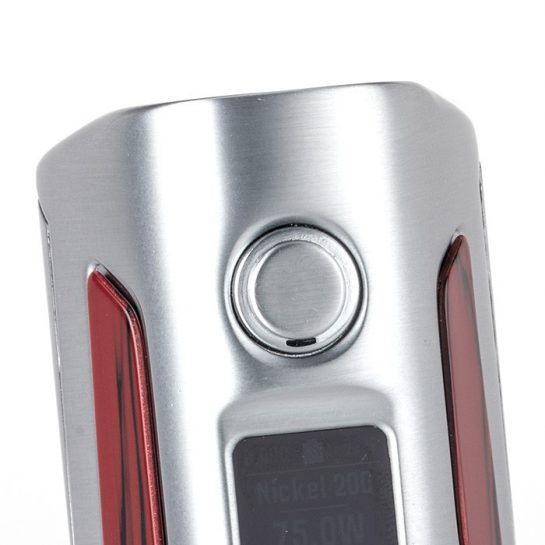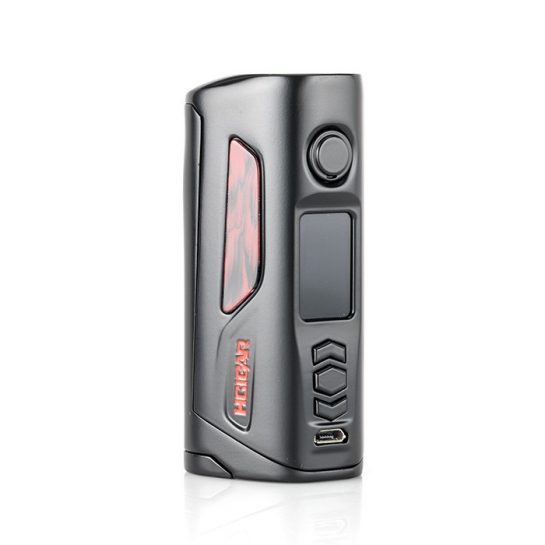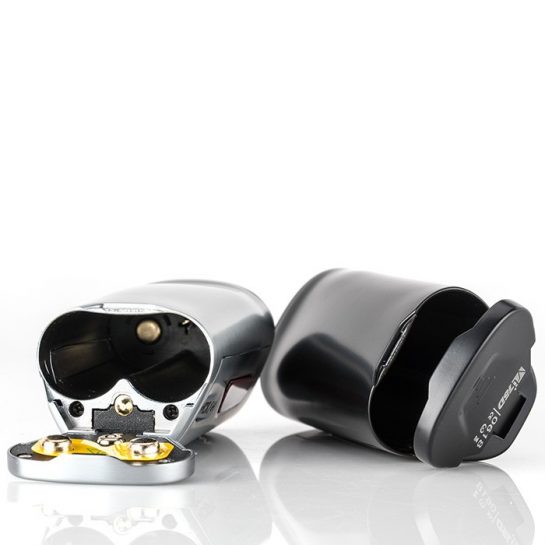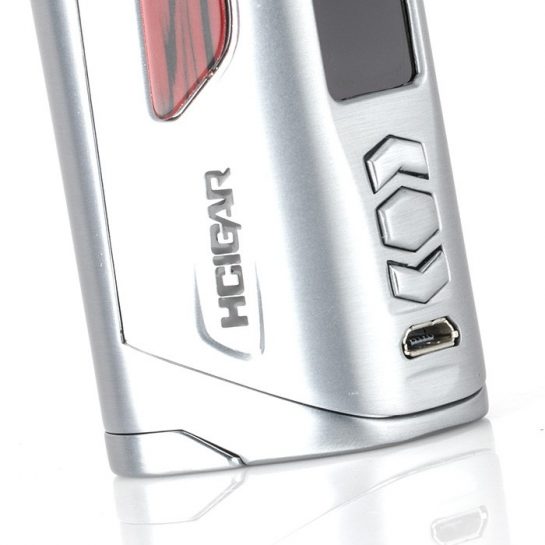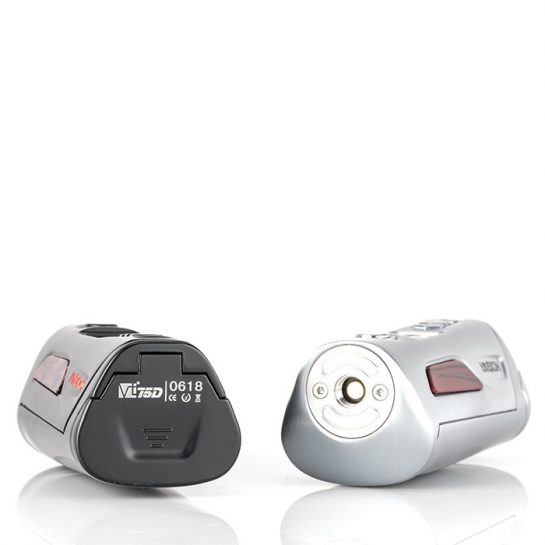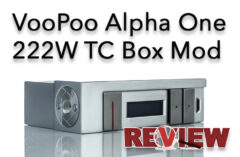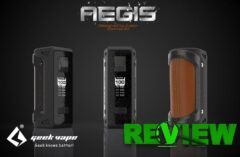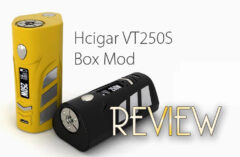Table of Contents
We’re going to start this review the same way we opened the Hcigar VT75D preview – the DNA75 Color chipset is awesome. When we first got a hold of this mod, we were blown away by how awesome it looked and navigated. Now, after a full week of testing, we’re even more blown away by its performance.
I don’t say this often, folks, but when it comes to the new DNA chips “believe the hype.”
The Hcigar VT75D isn’t perfect – no devices are. But when it comes to compact, attractive, high-end mods, there are few (if any) better options for today’s vapers. Let’s see why…
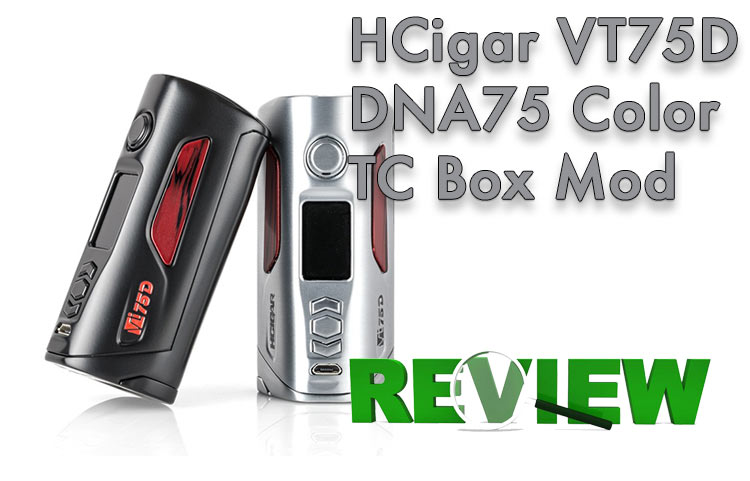
Initial impressions of the Hcigar VT75D Mod
I love reviewing high-end devices. Not just because I get to use and abuse the finest vape gear available, but also because the packaging seems to get less detailed and more abstract. It’s almost as if Hcigar felt no need to promote the product visually – its reputation alone would move it right off shelves.
The VT75D comes in a plain white box with blue writing. There is a brand logo, and minimal information for buyers. That’s it. If you don’t know about the VT75D, or have a less-than-helpful vape shop employee, there’s nothing about this package that will entice.
However, if you DO know what’s inside, the box doesn’t matter. Because all of the money Hcigar saved on packaging was put right into device design. The hexagonal VT75D is simply gorgeous – my black and red test model is the pinnacle of simple, concise, well-thought-out ergonomics.
From the moment I removed it from the package, I immediately knew I’d love holding and operating the mod, and it all proved true. Even without two 18650s installed, the slender, aluminum VT75D is surprisingly dense and weighty, but it sits very comfortably in the hand. And the weight is reassuring, rather than frustrating.
The beauty isn’t just skin deep, either. The bomb-proof, offset 510 connection is screw-fit, and accepted all of my tanks and RDAs (up to 25mm) without any notable gaps. Certain 25mm tanks with wider AFC rings might see a hair’s width of overhang, but the design made most of my atomizers look good regardless.
The light metal firing and operation buttons were solid, didn’t rattle, and were well-placed around the 0.91-inch TFT screen. In fact, the VT75D even has a center-positioned “action” button, eliminating the need for awkward fire-key gymnastics. I’ve begged for this for ages, and really hope the trend continues.
The only problem I had with the VT75D design is the awful bottom battery door. The hinged mechanism is so tight, it was nearly impossible to remove without using a rubber jar opener. This was SLIGHTLY easier when batteries were installed, but either way, the fit is far too snug – yes, I launched this thing to the floor more than once when struggling to swap batteries.
Operating the Hcigar VT75D Mod
After (finally) getting the VT75D powered up, my enthusiasm renewed. The full-color TFT display is absolutely gorgeous, driven by the latest DNA75C chipset. The screen is relatively diminutive (though fully proportioned to the mod itself) but the high-resolution screen does a great job getting information displayed cleanly, in a vertically oriented format.
Navigating the VT75D’s menus is a pleasure. Newcomers will have a slight learning curve when it comes to selecting options, but it’s never unclear as to how to proceed, and what the logic is behind the menu trees. Likewise, the Escribe and Theme Designer software is similarly intuitive, though I found the onboard device operations to be more than adequate for customizing the experience.
Moving through the options, the VT75D is loaded. It runs from 1-75 watts (0.2-9 volts), can reach 600-degrees Fahrenheit, and has a wide range of minimum and maximum resistance levels, depending on how users adjust their Escribe settings.
I was very impressed by the available protection and error suite. Not by the available errors, which include the usual atomizer, short circuit, battery level, resistance protection, heat sensing and other options. But rather by how well they work, and how precise they are. Full disclosure: I tried to push the VT75D past its stated limits, and it never once failed to stop me in my tracks.
[Note: Please do NOT attempt to push your vape devices past their stated capabilities. Those instruction manuals are there for a reason, kids.]
Vaping the Hcigar VT75D Mod
This is what you really want to know – how does the VT75D vape? Very, VERY well. So well, in fact, that I’m starting to reconsider my stance on Evolv chipsets as overrated. I’ve always believed that these boards, while high-performing, were never worth the hype or price – especially with competing chipsets coming out that rival their performance, at much better price points.
However, the Hcigar VT75D and several other recent devices have shifted my perspective, and might have even made me wonder if other popular devices are underpowered. Why? Because even with a max output of 75 watts, the VT75D absolutely screams with power.
Using my go-to iJOY Captain RDTA, with a pair of Kanthal claptons reading at 0.3 ohms, the VT75D effortlessly powered the tank at 60 watts, pushing flavor and clouds I would normally expect from wattages much, much higher levels.
Pushing the HCigar VT75D to 75 watts did nothing but deliver more power. There was no pulsing, underpowered hits or misfires – just smooth, consistent, battery-sipping performance. And it all just seemed much more powerful than devices listed north of 100 watts. I hung around 60-70 watts the entire time I used the mod, and never once felt like my tanks were struggling from lack of power.
Temp control mode was equally impressive. Though the Escribe was typically reliable and intuitive, the wonderful TFT display and menu system made it just as easy to adjust on the mod itself. And within a minute or two, I found the perfect setup for my 0.15-ohm titanium test coils.
Again, I tried to push the VT75D past its limits with both low resistance and high temperatures, and the VT75D threw up warnings within seconds of the negative behaviors. And the warnings were just that – warnings. It didn’t require me to reboot the mod, or back out of menus, or even have to endlessly tinker. I just fixed my “mistakes” and the VT75D resumed its top-flight performance.
Finally, I have to mention that the HCigar VT75D is one of the most frugal battery consumers on the market today. Using a pair of brand new 18650s, the mod gave me nearly 10 (10!) hours of steady vaping, navigating, fiddling and exploring. And the power remained steady until that “low battery” warning flashed across the screen. Just flawless.
HCigar VT75D Wrap Up
There are nearly 1,300 words in this review, and the only complaints I have about the Hcigar VT75D are a stiff battery door and lifeless packaging. That pretty much sums up my feelings on this excellent, compact, beautiful vape mod.
It’s not the cheapest device in this category, to be sure. But Hcigar is well-known as a top-tier vaping manufacturer, and the VT75D will do nothing but further this reputation. Buy with confidence, throw a rubber jar opener into your cart, and enjoy one of the best DNA devices to date.
Score: A+
HCigar VT75D Specs and Package Contents
Hcigar VT75D mod specs:
- Dimensions: 85mm x 39mm x 35mm
- Evolv DNA75C board
- Zinc alloy construction
- Stainless steel 510 connector
- Gold-plated spring loaded 510 pin
- Parallel battery configuration
- Wattage range: 1W – 75W
- Output Mode: VW / TC-Ni / TC-Ti / TC-SS
- Temperature range: 100°C – 315°C / 200°F – 600°F
- Preheat functionality
- Onboard programmable multicolor LED indicator
- Vibrant 0.91″ full color TFT Screen
- 1A Micro USB recharging
- Firmware upgrades
- Fully customizable interface via EScribe & Theme Designer software
Hcigar VT75D mod contents:
- 1x Hcigar VT75D TC box Mod
- 1x Micro USB Cable
- 1x Warranty Card




